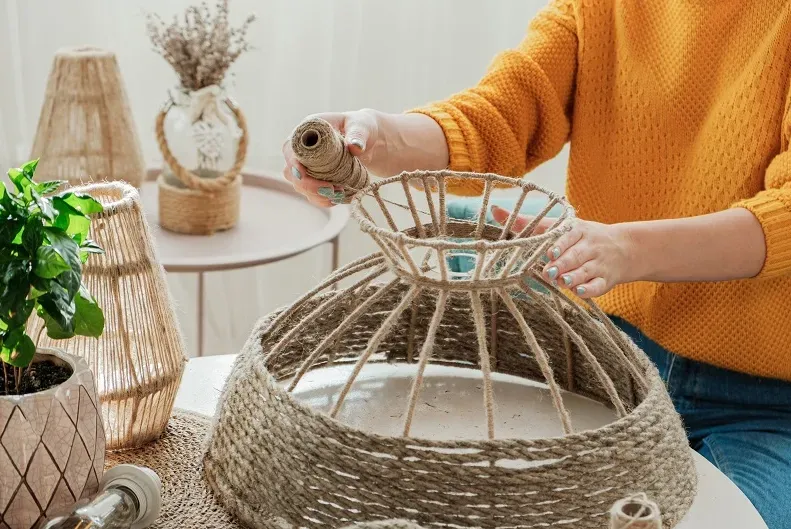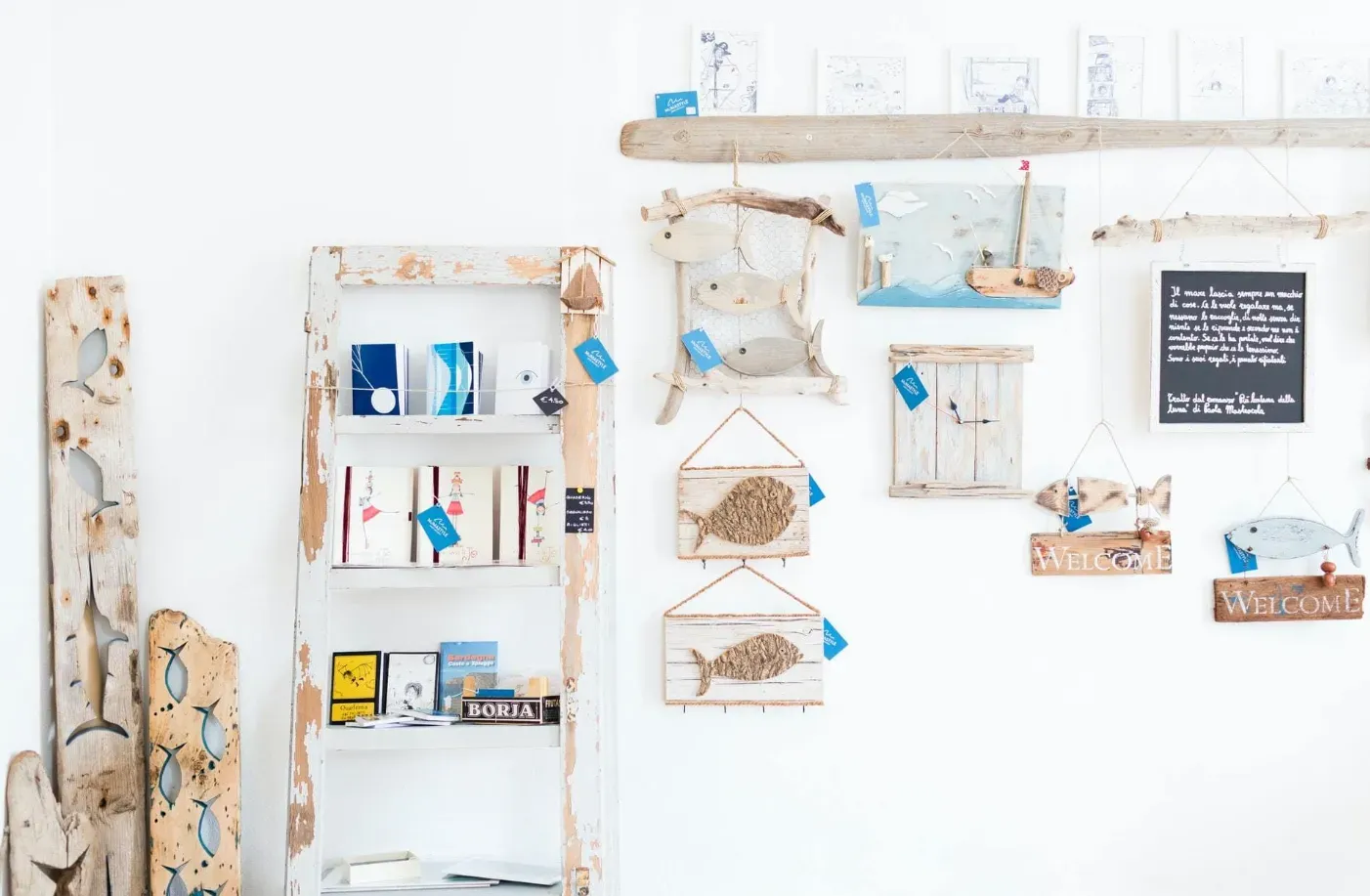The Art of Upcycling & DIY Home Décor: Giving Old Furniture a New Life

By
Shrusti Naik
Posted on August 29, 2025. 10 mins

The Art of Upcycling & DIY Home Decor: Giving Old Furniture a New Life
Introduction

In 2025, India’s home décor market is undergoing a quiet but powerful transformation. While premium furniture imports and luxury interiors capture headlines, a parallel trend is reshaping how urban households approach design: upcycling and DIY home décor. A recent study by Statista India shows that the Indian furniture market is projected to grow at over 7% annually, with sustainable and budget-friendly categories seeing the fastest adoption. Rising costs of new furniture, growing environmental consciousness, and the desire for personalized living spaces have pushed Indian homeowners to look inward, literally giving their old furniture a new life.
Unlike mere recycling, upcycling is about adding value, transforming a worn-out chair into a statement piece, turning discarded wooden doors into headboards, or revamping glass bottles into pendant lights. For Indian households navigating smaller apartment sizes, evolving lifestyles, and tighter budgets, the art of upcycling is not just creative expression but also smart living.
Understanding Upcycling in the Indian Context
Upcycling differs from recycling in one critical way: while recycling breaks down materials for reuse, upcycling reimagines existing objects to create something of higher aesthetic or functional value. In India, this aligns with our long-standing cultural ethos of “jugaad”—repurposing with ingenuity.
Consider Mumbai or Bengaluru, where compact apartments often push residents to think creatively. A salvaged trunk can be converted into a coffee table with storage, while an old cot (charpai) can be modernized with bright upholstery. What once might have been seen as a compromise now signals taste, sustainability, and individuality.
The rise of DIY (Do-It-Yourself) communities, supported by YouTube tutorials and Instagram décor influencers, has also encouraged younger Indians to explore this craft. For many millennials and Gen Z professionals, DIY décor is not just about saving money but also about building a home that reflects their identity. Besides. here are some Design Choices That Can Actually Increase Your Property Value
The Sustainability Advantage: Why Upcycling Matters
Sustainability is no longer just a buzzword, it’s becoming a lifestyle priority. India generates nearly 3.4 million tonnes of plastic waste annually and over 62 million tonnes of solid waste (Source: Economic Times, 2024). A large share of this comes from discarded household items and furniture. By choosing to upcycle instead of discard, households directly reduce landfill burden and conserve resources.
Globally, sustainable furniture is valued at over USD 44 billion and is expected to grow steadily. In India, brands like Pepperfry and Urban Ladder are already expanding eco-friendly collections, but upcycling allows individuals to take the sustainability journey into their own hands. When you repaint a rusting iron bed or repurpose old doors into bookshelves, you’re not just saving money, you’re actively lowering your carbon footprint. Here's a guide that tells you what to Do (and Avoid) Room-by-Room if you are Designing Your First Home
DIY Home Decor Ideas That Work in Indian Homes
One of the biggest appeals of DIY décor is its flexibility. Indian homes, with their diverse layouts and cultural influences, offer a wide canvas for experimentation.
For example, old sarees and dupattas can be stitched into vibrant cushion covers or wall tapestries. Wooden crates, often discarded by fruit vendors, can be polished and stacked into bookshelves. Even chipped ceramic plates can be turned into mosaic table-tops.
Such projects are inexpensive, but they also add an element of storytelling to the home. Guests don’t just see a decorative item; they see a memory preserved and transformed. Unlike mass-produced furniture, upcycled pieces carry a uniqueness that can’t be replicated. Take a look at these Kid-Friendly Interiors That Aren’t an Eyesore
The Economics of Upcycling: Cost-Saving and Value-Adding
India’s urban middle class is increasingly sensitive to home décor costs. According to Business Standard (January 2025), average furniture prices in metros have risen 15–20% in the last three years due to inflation and supply-chain pressures. For many, buying new isn’t always feasible.
Upcycling, by contrast, requires minimal investment. A ₹500 can of paint, some sandpaper, and a weekend of effort can completely reinvent a dresser worth ₹15,000 in retail. Moreover, the resale market for handcrafted and unique upcycled furniture is growing, especially on platforms like OLX and Etsy India. This makes upcycling not just a cost-saving hack, but also a potential side income stream for creative homeowners. With all this, here is another way to enhance your home by Choosing the Right Color Palette for Each Room
Upcycling as a Creative and Emotional Outlet
Beyond economics and sustainability, upcycling has a deeply personal dimension. Many Indians hold onto heirloom furniture, whether it’s a grandfather’s rocking chair or a mother’s teakwood cupboard, that may not fit into modern apartments. Upcycling offers a way to preserve these memories while adapting them for today’s lifestyle.
The act itself, sanding, painting, sewing has therapeutic benefits. Studies have shown that engaging in creative activities reduces stress and enhances well-being (Source: Mint, July 2024). For Indian professionals juggling demanding work lives, DIY décor projects are a meaningful way to reconnect with creativity and home life. Besides take a look at Designs You’ll Actually Want to Live With where you can include all these safety measures smoothly.
Conclusion

The art of upcycling and DIY home décor is more than a design trend, it’s a lifestyle movement shaping how Indians think about homes in 2025. It combines sustainability, affordability, and creativity while tapping into cultural values of resourcefulness. In an era where urban spaces are shrinking and costs are rising, upcycling empowers homeowners to build environments that are both deeply personal and environmentally responsible.
The next time you think of discarding that old piece of furniture, pause. With a bit of imagination and effort, it might just become the highlight of your living room. In giving old furniture a new life, you’re not just decorating your home, you’re also reshaping the future of Indian living spaces.
For those in pursuit of their dream home, investment opportunities, or a sanctuary to call their own, Jugyah provides top housing solutions with its intelligent technology.
Frequently Asked Questions
Q1. What is the difference between recycling and upcycling in home décor? Recycling breaks down materials for reuse, while upcycling transforms existing items into something more valuable or aesthetically pleasing, often requiring little industrial processing.
Q2. Is upcycling furniture really cost-effective in India? Yes. A small investment in tools and materials can significantly reduce costs compared to buying new furniture, especially in metros where retail prices are high.
Q3. Where can I source materials for DIY and upcycling projects in India? Local flea markets, second-hand shops, OLX, and even neighborhood carpenters are great sources. Many people also start with their own unused furniture.
Q4. Are there Indian brands promoting sustainable or upcycled décor? Yes, platforms like Pepperfry and Urban Ladder have eco-friendly lines, while smaller Indian startups focus exclusively on upcycled furniture. DIY communities on Instagram and YouTube also showcase Indian-specific ideas.
Q5. Can upcycling improve the resale value of a home? Indirectly, yes. A home with thoughtful, unique, and sustainable décor often makes a stronger impression on buyers, contributing to overall appeal and perceived value.